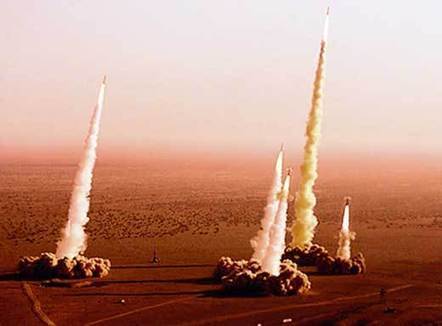After years of living in the shadow of an Israeli military strike, Iran is now openly contemplating the idea of pre-emptive strike, in light of Israel's preparedness for imminent attack on Iran's nuclear facilities. Citing a right to anticipatory self-defense, the Iranian argument is that instead of waiting for its Zionist adversary to make a move, Iran should take the offensive and cripple Israel's ability to deliver on its threatened assault.
Iran's plan to initiate a pre-emptive strike on Israel is perfectly legal under customary international law, according to several Tehran political analysts specializing on Iran's foreign affairs. "Under the UN Charter, Iran has the inherent right of self-defense that in this case translates into the right to respond to the clear and present danger of imminent attack by the state of Israel in clear violation of international law," says a Tehran University political scientist who spoke to the author on the condition of anonymity.
In a nutshell, Tehran's legal argument in defense of a pre-emptive strike on Israel centers on several inter-related elements.
First, under Article 51 of the UN Charter, Iran has the right to strike Israel because Israel has already engaged in overt hostile acts including the assassination of Iran's nuclear scientists, sabotage, and life-threatening cyber-warfare, not to mention Israeli political and military leaders' open declarations of intent to attack Iran in the immediate future.
Second, these illegal acts combined with the declarations of intent constitute an imminent national security threat to Iran, defined under customary international law in terms of "outward hostile acts" of one state against another.
Third, Iran has already exhausted all the diplomatic means for deterring an Israeli strike, such as by repeatedly complaining to the UN Security Council, to no avail as the Security Council has turned a blind eye.
Fourth, Israel's stated intention to attack Iran violates international law for a number of other reasons:
1] Iran has never threatened to use its nuclear capability to attack Israel.
2] There is a legal bar against any attack on Iran's civilian nuclear facilities, in light of the Resolution 533 of International Atomic Energy Agency (IAEA), which prohibits any such attack and deems it a violation of international law.
3] Iran is a signatory to the Non-Proliferation Treaty (NPT), its leadership has formally renounced nuclear weapons, there is an absence of any treaty constraint barring Iran's possession of a nuclear fuel cycle, and to this date after extensive inspection of Iran's nuclear facilities, the IAEA has never detected any diversion of nuclear material to military purposes.
A research group in Washington has pinpointed on satellite imagery what it says is the Iranian military testing facility that has long eluded U.N. inspectors.
It's the most talked-about military site in the world. Just 18 miles southeast of Tehran, the Parchin military facility, suspected of housing a containment chamber to conduct high-explosive tests, has long eluded U.N. inspectors. But today, a research group in Washington has pinpointed on a satellite image what it says are its whereabouts.
In November, the International Atomic Energy Agency reported that Iran had constructed a building at its Parchin military facility around 2000 to hold "a large cylindrical object" and that "a large earth berm was subsequently constructed between the building containing the cylinder and a neighbouring building, indicating the probable use of high explosives in the chamber." It added, "The Agency has obtained commercial satellite images that are consistent with this information." But the IAEA never released the images backing up its report.



